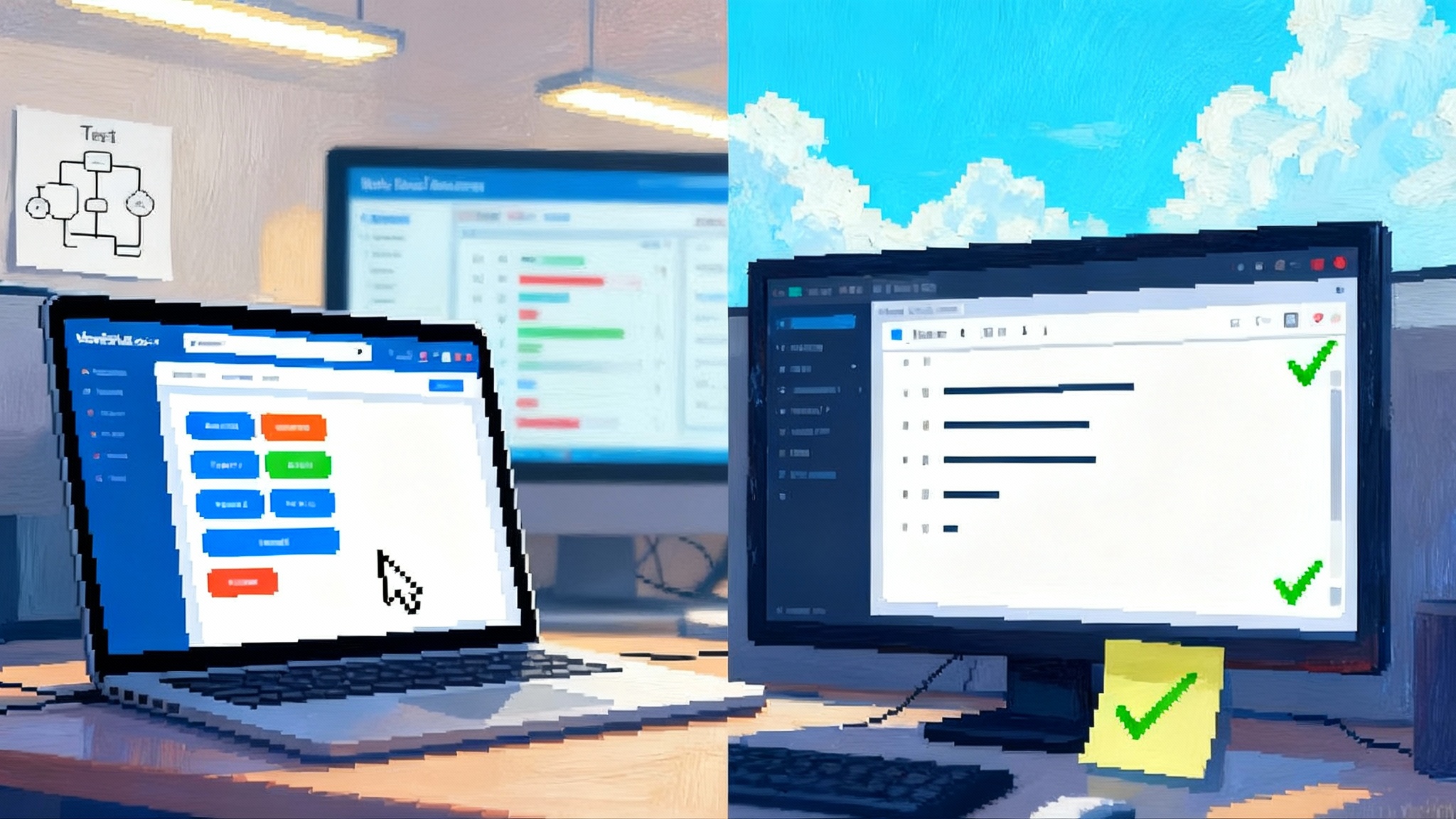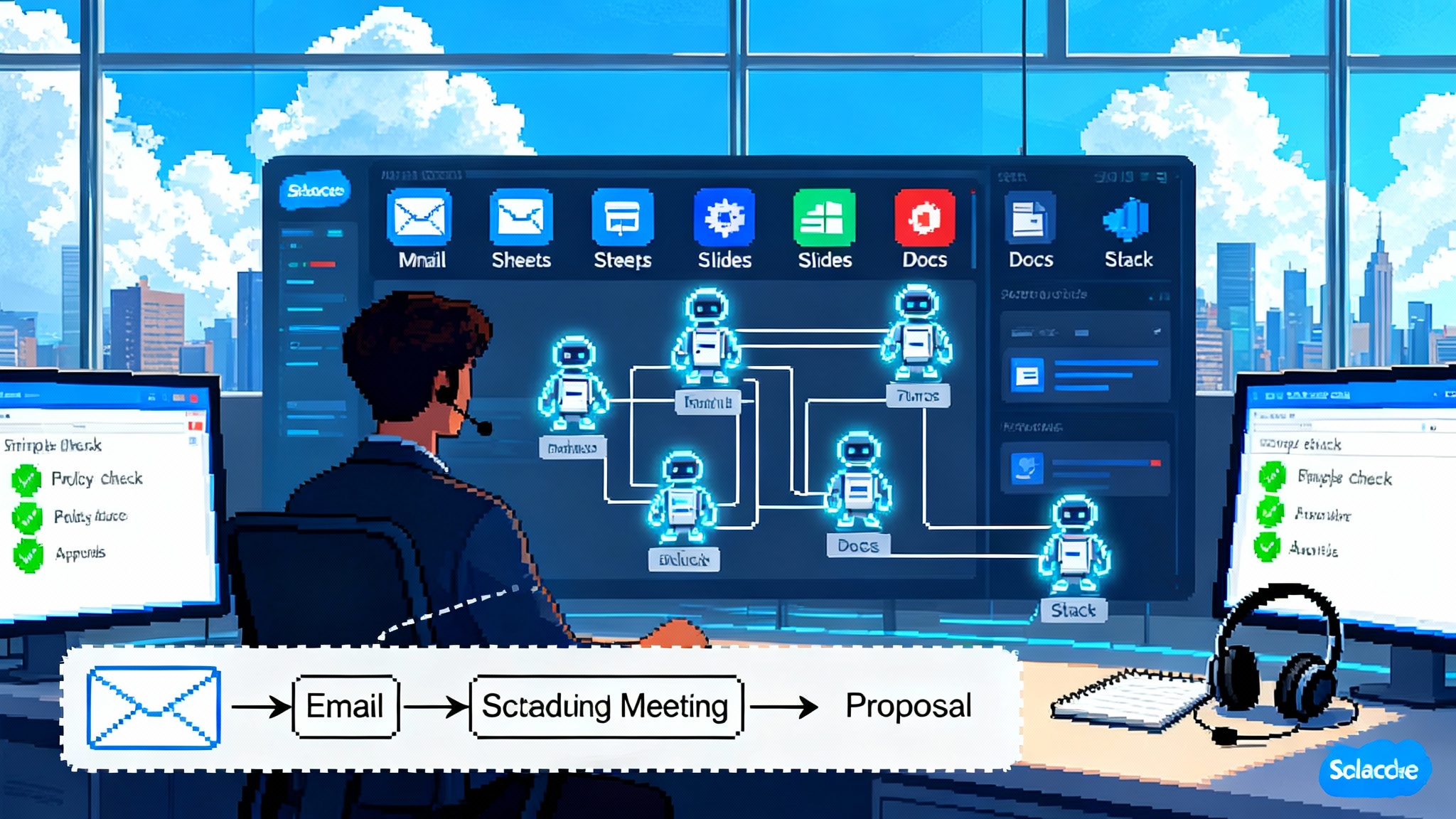From Copilot to Agents: GitHub’s multi agent leap in 2026
GitHub’s Agent HQ upgrades Copilot from code suggestions to auditable execution. Use this practical playbook to pilot, govern, and measure ROI for multi-agent development in 2026 without vendor lock-in.

The moment multi agent coding gets real
At GitHub’s Universe 2025 keynote, Agent HQ took center stage as the control room for software teams that want more than helpful suggestions. The pitch was simple and bold. Instead of a single assistant that drafts code in your editor, Agent HQ coordinates multiple specialized agents that plan work, write code, run tests, and open pull requests under explicit guardrails. Think of it as an air traffic control tower for development tasks, where Copilot evolves from a conversational helper into a working participant that can execute steps you approve and audit. This mirrors the modular turn many teams are making toward real agents, as discussed in modular turn for real agents.
Why does this matter now? Over the past two years, teams learned that suggestion engines alone do not move core business metrics. What matters is auditable execution. If an agent can turn a backlog ticket into a signed pull request with traceable decisions, predictable rollbacks, and a complete activity log, the team gets real cycle time reductions rather than nice to have convenience.
From suggestions to autonomous execution
A suggestion improves a single file. Autonomous execution improves the shape of the software delivery process. Agent HQ formalizes that change in four concrete ways:
-
Roles and responsibilities. You do not run an amorphous model. You assign a Code Author, a Test Builder, a Security Reviewer, and a Release Assistant. Each role has a bounded objective, a tool list it is allowed to use, and a policy that limits scope and time.
-
Safe sandboxes. Agents work in ephemeral branches and environments, with restricted credentials, timeouts, and compute budgets. They do not touch production secrets. They cannot modify protected files or repositories without explicit approvals.
-
Policy as code. Rules live alongside the repository. If the Security Reviewer is not satisfied, the Code Author cannot merge. If the agent edits a file pattern marked sensitive, an extra human approval is required. These are not hand waved guidance documents. They are machine enforced constraints.
-
Full audit trails. Every plan, tool invocation, code diff, test run, and comment is logged, signed, and attributable to the agent identity that took the action. This turns compliance conversations into a search query rather than a scavenger hunt, and can piggyback on the GitHub enterprise audit log.
What multi agent actually means in practice
It is tempting to picture a swarm of models buzzing around your repository. In reality, multi agent means a small, purposeful ensemble that mirrors your team’s best practices.
- Code Author agent. Proposes diffs, drafts functions, and writes scaffolding for new endpoints. It is allowed to run the local test suite and static analysis, but cannot merge.
- Test Builder agent. Generates unit and integration tests, constructs mocks, and refactors flaky tests. It can request the Code Author to revise code if coverage or assertions are weak.
- Security Reviewer agent. Runs dependency checks, searches for insecure patterns, and enforces policies for secrets, tokens, and license compliance.
- Release Assistant agent. Prepares changelogs, updates deployment manifests, and verifies that versioning and rollout plans meet policy.
Agent HQ coordinates these roles using a queue. A ticket enters the queue. The Planner creates a stepwise plan. The Code Author produces a branch and a draft pull request. The Test Builder expands the test suite and gates on coverage thresholds. The Security Reviewer signs off according to policy. The Release Assistant confirms deployment metadata. Humans approve or reject along the way, and every step is captured in an audit log.
The 2026 pilot playbook
You can stand up a credible multi agent pilot in twelve weeks. The following schedule has been tested with mid sized product teams and is safe to adapt.
Weeks 0 to 2: Form the control group and set goals
- Pick a tiger team of 6 to 10 engineers across backend, frontend, test, and DevOps. Name a pilot owner who can accept risk on behalf of the group.
- Establish three objective metrics you will move by March 31, 2026. Good choices are mean time from ticket start to merged pull request, percentage of pull requests with increased test coverage, and cost per merged pull request.
- Define a kill switch. A single configuration flag that disables all agent merges across pilot repositories.
Weeks 2 to 4: Instrument the repos
- Create a dedicated sandbox environment per repository. Restrict credentials to non production data. Enforce short lived tokens and time boxed runs.
- Configure GitHub branch protection rules so that only Agent HQ service identities can create or update draft pull requests from agent branches. Require at least one human approval for merge in all cases.
- Turn on fine grained logs. You want line item traces of tool use and code diffs per agent step. Store logs in a centralized bucket with retention set to at least ninety days.
Weeks 4 to 6: Choose the first three use cases
Aim for low regret work where multi agent coordination pays off quickly.
- Dependency upgrades at scale. Have the Code Author propose version bumps and the Test Builder adjust tests. The Security Reviewer validates vulnerability fixes and license rules.
- Test generation for legacy modules. Point agents at older services with weak coverage to generate safe tests that do not change behavior.
- Documentation skeletons. Use agents to produce reference documentation and code examples for public facing endpoints and components.
These are measurable and low risk. Leave migrations and production infrastructure files for a later phase.
Weeks 6 to 8: Design the agent topology and policies
- Map each use case to a swimlane with named agents. Decide who can call which tools. Be strict. The Security Reviewer should not be able to generate code, and the Code Author should not be able to alter dependency policies.
- Write policy as code. Represent limits in configuration. Examples include maximum number of files edited per run, total lines changed, allowed directories, and a timeout per step.
- Adopt human in the loop patterns. Require human review before agents can change database schema, service contracts, or cryptography dependencies.
Weeks 8 to 10: Dry runs and adversarial tests
- Run tabletop exercises. Feed agents synthetic tickets with traps. Examples include a secret in a test fixture or an intentionally failing check. Verify that policies trigger and the kill switch works.
- Measure base costs. Log agent run time, tool costs, and human review minutes. Establish your unit economics before production load arrives.
Weeks 10 to 12: Production pilot
- Turn on the pilot for the three use cases. Limit concurrency and expand only when metrics hold steady two weeks in a row.
- Publish a weekly report to leadership. Include merged pull requests, rework rate, test coverage deltas, time saved, and any security exceptions.
Governing multi agent development without slowing it down
Governance can accelerate delivery when it is precise and automated. Use these mechanisms to keep the pilot safe and scalable.
- Policy tiers by repository criticality. Classify repos as core, important, or peripheral. In core repos, require two human approvals for any agent change that touches service contracts or security sensitive code. In peripheral repos, allow merge with one approval if tests and security checks pass.
- Tool whitelists per agent. Define allowed commands and external services. Deny file system write access outside the repository workspace. Deny network calls except to approved endpoints.
- Identity and signing. Give each agent a unique identity and sign all comments, commits, and artifacts. Attach a signed plan to each pull request so that reviewers can trace what was intended versus what was executed.
- Quarantine queue. If a run triggers a policy violation, send the branch to a separate review queue with no permission to re run tools. Only a human can release it.
- Data governance. Mask or synthesize personal data during test generation. Disallow training on proprietary code unless you have explicit legal approval and contractual protections.
How to measure return on investment with discipline
Return on investment is not the same as cost savings. It is about creating more valuable software per unit of time and money. Use this measurement framework to keep the program honest. For background on verification heavy work, see reasoning LLMs in production.
- Baseline and A/B structure. Before the pilot, collect four weeks of baseline data for matched repos and teams. During the pilot, use a split design where some tickets are assigned to agent workflows and others use standard processes. Do not rely on before versus after comparisons alone.
- Throughput metrics. Track number of merged pull requests per engineer per week, median cycle time from ticket start to merge, and work in progress hours per ticket.
- Quality metrics. Track pre merge test coverage deltas, post merge defect rate, and change failure rate in production. Also track rework rate for agent generated pull requests, defined as human changes requested before merge.
- Cost metrics. Sum model costs, compute time, and added review minutes. Normalize by merged pull requests and by story points if your team uses them. Track cost per merged pull request and cost per thousand lines changed to detect waste.
- Risk metrics. Count policy violations, quarantine events, and rollbacks. Aim to reduce violations per ten agent runs over time.
Two composite ratios make executive conversations simple.
- Automation throughput rate. Agent merged pull requests divided by total merged pull requests. This shows how much delivery the agents are carrying.
- Value capture ratio. Time saved by agents divided by all agent related costs. Estimate time saved from cycle time reductions and reviewer minutes avoided. This ratio should rise as you add use cases.
Commit to a stop or scale rule. If both automation throughput rate and value capture ratio improve for four consecutive weeks without a rise in rollbacks or policy violations, expand the pilot. Otherwise, pause and adjust.
Avoiding vendor lock in while embracing the best models
Your agents will rely on foundation models from different providers. Many teams are excited about Gemini Agent Mode and Anthropic’s focused reasoning capabilities, while others rely on existing integrations they already use for Copilot. You can adopt a mix without painting yourself into a corner. For a view of the ecosystem direction, study the open agent stack.
- Separate control from inference. Keep Agent HQ as the control plane that holds plans, policies, logs, and identities. Treat each model provider as an interchangeable inference engine. Never store policy or audit state in a provider specific feature.
- Standardize messages and tools. Define a neutral schema for messages, tool calls, and results. Represent tools as contracts with structured inputs and outputs. This makes it straightforward to swap models without changing the agent logic.
- Containerize tools and adapters. Wrap provider specific clients in thin containers or modules. If you need to switch vendors, you replace the adapter rather than the entire workflow.
- Build a model router. Start with a simple rule set. Send generation heavy tasks to a model optimized for speed. Send reasoning heavy verification to a model optimized for accuracy. Keep routing logic configuration driven.
- Keep a provider exit plan. Document a one week cutover runbook that lists credentials to rotate, endpoints to change, and test suites to re run. Exercise this plan once per quarter.
This approach ensures that you can try new providers without risky rebuilds or abandoned workflows.
An end to end example to make it tangible
Imagine a payments team that needs to add invoice level discount support across three services. The team turns this into an agent friendly ticket with a clear outline of acceptance tests and affected endpoints.
- The Planner reads the ticket and drafts a four step plan: update the invoice schema, add discount calculation, adjust tax computation, and extend reporting.
- The Code Author creates a feature branch and drafts code across the three services, staying within directory boundaries allowed by policy. The agent adds clear comments that reference the plan steps.
- The Test Builder expands unit tests to cover discount edge cases and adds integration tests that simulate cross service calls. Coverage improves from 67 percent to 78 percent in the touched modules.
- The Security Reviewer inspects for sensitive changes, verifies that no secrets are logged in the new code, and confirms license compliance on any new dependencies.
- The Release Assistant updates the changelog, proposes a feature flag strategy, and generates a rollout checklist for the service owners.
- A human reviewer inspects the plan, the diffs, and the test outcomes, leaves one request for a clearer error path, and approves the merge. The feature rolls out behind the flag for a percentage of tenants.
Notice the pattern. The agents never act outside their roles. They work in a transparent queue and leave artifacts that a reviewer can skim in minutes. The human reviewer spends time on judgment calls, not repetitive edits.
New roles and responsibilities you will actually need
Agent programs thrive when you name owners for the boring parts that make them safe and scalable.
- Agent Site Reliability Engineer. Owns uptime, cost, and alerting for Agent HQ. Sets budgets, tunes concurrency, and manages quotas.
- Model Librarian. Maintains the catalog of model versions, routing rules, and adapters. Works with security to approve or deny new providers.
- Policy Engineer. Encodes rules as code, designs test harnesses for policies, and signs off on changes to permission boundaries.
- Pilot Owner. Runs the weekly report, communicates with stakeholders, and makes the stop or scale decision with leadership.
These roles are part time at the start. Expect them to become explicit job descriptions if you scale across many repositories.
Risks that derail programs and how to blunt them
- Illusions of autonomy. If you let the Code Author call external tools freely, it will slowly expand its scope. Keep the allowed tool list short and visible in the pull request description.
- Approval fatigue. Reviewers will ignore agent pull requests if they are noisy. Set minimum change sizes and deselect low value proposals. Hold the bar for clarity in commit messages and diffs.
- Silent policy drift. If you edit policies ad hoc, you will not know why merges behave differently week to week. Treat policy changes like application changes. Open pull requests, review, test, and roll out with a changelog.
- Data mishandling. Never allow agents to fetch production data. Use synthetic or masked data in tests. Scan logs for sensitive strings.
The 2026 readiness checklist
- A clear list of three pilot use cases with start and stop criteria.
- Branch protection rules and a working kill switch tested in dry runs.
- Named agents with documented roles and tool whitelists stored as code.
- A baseline of cycle time, coverage, and cost per merged pull request for comparison.
- An identity and signing setup that marks every agent artifact.
- A weekly report template sent to leadership with metrics and exceptions.
- A model router and at least two provider adapters that you can swap.
- A one week provider exit runbook tested once per quarter.
Conclusion: make 2026 the year of auditable automation
Agent HQ changes the conversation from what models can write to what your team can safely ship. The leap is not about spectacle. It is about measurable cycle time gains, test quality improvements, and a clean audit trail that satisfies leadership and regulators. Start small, set clear policies, and measure hard outcomes. Treat models as interchangeable engines behind a control plane you own. With that discipline in place, multi agent development shifts from a promising demo to a production habit that compounds every sprint.








